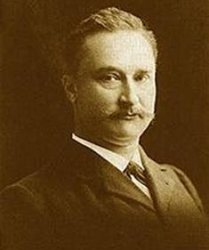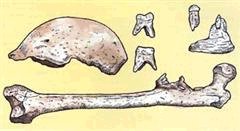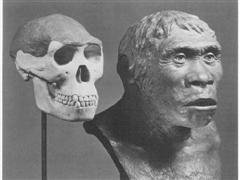Creation: Darwinian Evolutionary Frauds Pt. V

A Sunday guest post by my brilliant husband, Gregg.
Every Sunday, my clever husband offers me a “day of rest” by writing posts on the subject of his primary ministry. This is a topic that is gaining more and more attention in our modern culture. The topic, Creationism vs. Darwinism, is a subject that has broad reaching scientific, social, and metaphysical implications. He chooses to conclude each post with a message intended to hearten and bolster believers. However, for believers and non-believers alike, the primary purpose is to present scientific, historical, logical, and/or sociological data in an empirical fashion, as much as possible written in layman’s terms, and in a format suitable for supplementing any homeschool curriculum whether you choose to believe the Biblical account — or secular guesses — about the origins of human life on earth.
Monkey Business
During the Scopes Monkey Trial in July of 1925, Clarence Darrow stated, “We have only to look to the cavemen to know that man evolved from apes.” He cited the Neanderthal, Nebraska Man, and the indisputable Java Man.
Last week, I cited facts about the Nebraska pig tooth that were probably fairly shocking to some readers. This week, sit back with a cup of Java and we will learn how indisputable Java Man really is.
Cooking up a Hoax

Pithecanthropus erectus (does that sound scientifically authoritative enough for you?) meaning “upright ape-man,” a.k.a. Java Man, for decades cited as indisputable proof that man came from monkeys. Upright ape-man, indeed.
Eugene Dubois became a follower of Darwinian evolution while attending a Dutch college. Dubois, a former student of Ernst Haeckel, became intent on discovering the “missing link” his mentor believed had evolved somewhere in Africa or East Asia, and which Haeckel had already named without even a shred of physical evidence – Pithecanthropus alalus (man without speech). How is that for faith in action?
After dropping out of school, and to aid in his investigations, Dubois signed up as a doctor with the Dutch medical corps in the Dutch East Indies with the intention of hunting for fossils during his spare time. He began searching for fossils in Sumatra and other Dutch East Indies islands. He shipped thousands of crates of regular animal bones back to Holland, and then went to Java.
In September 1891 near the village of Trinil in a damp place by the Solo River at the foot of a volcano, Dubois found a skull cap. More than a full year later and at least forty feet away from where he had found the skull cap, he found a fully human femur. Due to the close proximity of the find, Dubois assumed they belonged to the same creature. Dubois then named the find Pithecanthropus erectus.
 Even later and further down in the sediment, he uncovered three teeth in yet another location in that area.
Even later and further down in the sediment, he uncovered three teeth in yet another location in that area.
Dubois then assumed that (1) all these bones were from the same individual, and (2) that they were as much as one million years old. What evidence is there to support either of these conclusions? Well, none. None at all.
Sixty miles away, in the same condition, he also found two complete and perfectly formed fully human skulls (known as the Wadjak skulls), but — interestingly enough — he did not publicize this fact. In fact, he actually hid them underneath the cot in his tent at the dig sites. When he did publish the find, he only published them in two non-science journals which were not meant for public consumption.
Upon his return to Europe in 1895, Dubois went on a lecture circuit and displayed his fossils to the International Congress of Zoology. His discovery received a lukewarm reception, causing him to became secretive, and paranoid, and he began to refuse to let anyone else examine the bones. Rudolph Virchow, who had been Haeckel’s professor and is considered the father of modern pathology remarked: “In my opinion this creature was an animal, a giant gibbon, in fact. The thigh bone has not the slightest connection with the skull.”

Throughout this time, Dubois never displayed the Wadjak skulls. He paraded “Java Man” out to any audience that would lend him a podium while forbidding close scrutiny of the objects. And, just as he had hidden the Wadjak skulls away in his tent, he kept the Wadjak skulls hidden under the floorboards of his house –for over thirty years — then finally made them known in the 1920s. What do you think the meaning of that is? What do you think his intent was?
As might be expected, many other experts at the time questioned whether all the bones Dubois brought forth in fact came from the same being. The thigh bone was very obviously a normal human upper leg bone, after all.
But Dubois spent most of the remainder of his life lecturing and telling people about the “half-human/half-ape” bones that he had found in Java in 1891-1892. In the early part of the century, the debate raged. British zoologists thought it was human, German experts decided it was ape, and the French conjectured that it was something between the two. Finally, in 1907 a German expedition was sent from Berlin to Java to settle the matter.
Dubois refused to even show the team of experts his “bone collection” nor help them in any way at all. It was around this time that the Wadjak skulls came to light and requests for those skulls to use for comparison were made of Dubois. Not surprisingly, Dubois refused to provide any additional information.
Arriving in Java, the German expedition went over the Trinil site thoroughly, removing 10,000 cubic meters [1,379 cu yd] of material and 43 boxfuls of bones in the process, and then declared it all to be a huge waste of time. Absolutely no evidence of Java Man or any other ape-man could be found. Their main discovery was that Dubois’ Java Man bones had been taken from a site where a nearby volcano had overflowed in the recent past and spewed forth lava, which overwhelmed and buried a number of both fully human people as well as animals.
Over the last 30 years, other fossil fragments similar to Pithecanthropus, were discovered in Java and Africa. In the 1950s, Darwinists transferred Pithecanthropus to the genus Homo (man), and Dubois’ find became the first fossil to be known as Homo erectus, or upright man.
In other words, he was human. Not an ape-man. Not a missing link. Not an intermediate form. A human being.

Dubois died in 1940. In a eulogy, Arthur Keith accurately called him “… an idealist, his ideas being so firmly held that his mind tended to bend facts rather than alter his [own] ideas to fit them.”
Far from being indisputable, both the validity and the relevance of Java Man remains in serious and continuous dispute and, like Nebraska man, shares a heritage rich in fraud.
If intermediate forms exist, why not rely upon actual examples instead of fraudulent bones? Why hide human bones under the floorboards of your hosue for more than 3 decades? What do you think the meaning and intent of all that is?
Coming Soon
Ahead, more monkey business in Darwinian evolutionary history. In the weeks to come, I will review the cases of Neanderthal, Piltdown Man, Rhodesian Man, Taung African Man, Peking Man, Nutcracker Man, Skull 1470, Flipperpithecus, Orce Man, and Lucy the magic Australopithecine.
The Truth
Creationism is a belief system which postulates that the universe, Earth, and life on Earth were deliberately created by an intelligent being, namely God. My personal position has a deep rooted foundation in scripture found in the Bible, God’s holy word, which is relied upon for insights regarding the history of the world by secularists and belivers alike. It is my belief that natural laws and chance alone are not adequate to explain all natural phenomena, up to and including the existence of intelligent life itself.
Any reasonable observer cannot believe this to be a dogmatic belief on my part, nor one that is outside the boundaries of logic or reason given the authority of scripture as my assumption. Based upon my beliefs, I have reached a few conclusions about truth.
The truth is that we are all one blood, all nations of men. We were placed here not as a mathematically impossible random act, but as an act of will by a supreme being. We serve a purpose. We are not animals. Our ancestors were not animals. As the Psalmist said, we are one step below Elohim. Created beings possessing of minds and emotions and eternal spirits.
Believers need to understand that much of what is recognized as “science” today is “falsely so-called” and amounts to assumptions based on misleading lies, outright frauds, or unworthy (godless) assumptions. “The fear of the Lord is the beginning of wisdom” (Proverbs 1:7). It would be wise to take the advice Paul offered to Timothy and “…keep that which is committed to thy trust [see Timothy 6:14], avoiding profane and vain babblings, and the oppositions of science falsely so called: which some professing have erred concerning the faith” (1 Timothy 6:20–21, KJV).
If Darwinists were so obviously right, why all the Pious Fraud? Why ANY fraud at all? Why not let indisputable facts lead to unavoidable conclusions in a chain of logical evidence? Why add lies, misdirection, obfuscation, mendacity, fabrication, and fraud to the argument? Why is that necessary? What is the meaning of that? What do you suppose the intent, is?
God Bless you and yours.
Gregg
Resources: Additional Posts dealing with Creation and Darwinism


Hi Gregg,
.
The claim made by supporters of evolution is that the Java man skull cap is a different species from Humans. Your claim that it is the same genus doesn’t contradict that in the slightest since species is a sub-classification of genus.
.
On another note, Dubois discovered the other skulls in 1888 and 1890. He described the first skull in a letter which was read in a meeting in 1889 and published in the Naturkundig Tijdschrift van Nederlandsch-Indie in March 1890. This is not a well known publication but is available in major libraries in Europe and America. It is certainly for public consumption. At no point did he hide the existence of both of the skulls since he had published the first by the time he found the second.
.
It may well be true that Dubois himself did not publish his findings in the Naturkundig Tijdschrift van Nederlandsch-Indie but that hardly seems worth noting. He made sure his results were published.
.
May peace be with you,
Neil.
Gregg, You say that you believe the Bible but you spend most of your time talking about Evilution. That’s Sin like it says in Romans 1:17 “The just shall live by faith.” If you’re living by faith you don’t keep talking about Satan’s lies. You should be looking to Jesus like it says in Philippians 3:20 “For our conversation is in heaven; from whence also we look for the Saviour, the Lord Jesus Christ: ” Jesus is who the Psalmist was talking about “the son of man, that thou visitest him? For thou hast made him a little lower than the ANGELS, and hast crowned him with glory and honour.” Jesus is the Son Of Man. You’re just changing the Truth of God into a lie (Romans 1:25). You need to repent and turn to Jesus.
Thanks for your comment, JP. I appreciate your opinion and your advice.

.
The very event (or string of events) that burned my very sincere and deeply felt conviction into my heart that the word of God is entirely true from beginning to end was to shed the lies indoctrinated into my mind on a nearly daily basis by Darwinism. I am going to rebuke you, but only a little bit. I very much do live by faith. I simply understand that there is an entire world out there who think as I once did, and who may not have ready access to the scientific truth that handily dispels the lies of Darwinism.
.
While it may seem to you that I spend “most” of my time talking about Darwinism, I understand that you base this opinion only about a thousand words that I post and only once per week to this blog. So while it probably “seems” that I “should” do this or that — in your opinion — I realize that it only “seems” that way. You probably “should” realize that I have an entire life that takes place outside of those few thousand or so words posted once per week, that I am saved by the blood of the Lamb, that I am your brother in Christ, and that while educating others about the fallacies of Darwinism is — as both my wife and I proudly proclaim– my primary ministry, it is not my only ministry.
.
Allow me to minister to you, momentarily. You misquote, as many often do, Psalms 8:5 which reads (in the NKJV), “For thou hast made him a little lower than the angels, and hast crowned him with glory and honour.”
.
Look at the original Hebrew:
.
The word is Elohim — which is often mistranslated as “Angels” but that is entirely inaccurate. In every other case, Elohim means ‘mighty one(s)’ and is used to denote God as mighty one (and Creator).
.
May God richly bless you in your journey.
Gregg
Hi Gregg,
.
Your post is mainly about Dubois and how he acted. It seems to me that there was a stage in history when it was fashionable to go out searching for fossils. There was much kudos to be had for finding a new species. In that context, it’s understandable that people would get carried away and make claims about their finds which are not supported by the evidence. I’m not saying this to excuse their behaviour at all. I’m just saying it’s understandable. The thing is that this sort of behaviour tells us nothing about whether evolution is true or not.
.
The same sort of behaviour has been seen in people searching for Noah’s ark, the ark of the covenant, the cross of Christ, etc.. Eric Cline told ABC news that people are claiming to find Noah’s ark every couple of years. They can’t all be true. There’s a lot of fraud going on there.
.
Does that mean that Noah’s ark didn’t exist? I don’t think so. But it would be inconsistent of you to say that your words about evolution do not apply: “Why ANY fraud at all? Why not let indisputable facts lead to unavoidable conclusions in a chain of logical evidence? Why add lies, misdirection, obfuscation, mendacity, fabrication, and fraud to the argument? Why is that necessary? What is the meaning of that? What do you suppose the intent, is?” If those words apply to evolution then they also apply to Noah’s ark. I think I’m going to have to bring this up every time you use the word fraud.
.
The fact that Dubois was over-enthusiastic about his find doesn’t mean that evolution is false. Like you say, scientists think that the skull cap is similar to Homo Erectus but that the femur is from a modern human. So Dubois was wrong. I can live with that.
.
But what about the skull cap. You say it’s human. It’s not because it doesn’t have a forehead. My question to you is, why do you call this skull cap something which it is not? Isn’t that fraud on your part? A bit of wishful thinking perhaps? Reading the final part of your post, it sounds like you had an emotional reaction against evolution. I think that’s still clouding your judgement.
.
I’m also not sure you understand what it is you’re rejecting. The things you say about evolution are quite alien to me. The booming voice saying “MILLIONS OF YEARS”, the dirt and water being grandpa and grandma. That’s not what evolution is about at all. It’s about a slow process which doesn’t have much effect over 100 years but has a large effect of 1 million years. That sounds reasonable for a slow process. No booming voice needed. It’s a process which has effects which we can make predictions about. We can test those predictions. We can do science. When we do those tests, we find that the predictions are generally correct. This is the evidence which supports evolution.
.
When you talk about dirt and water, I guess you’re referring to abiogenesis. We still know little about that because it happened so long ago. Scientists are still looking for the answer. But even if the beginning of life is uncertain, there’s a lot we can say about how things developed since then. Unfortunately the answers which science has come up with are that mankind evolved from single celled organisms. I’m sure you appreciate that that’s at odds with the Genesis accounts.
.
May peace be with you,
Neil.
The booming voice saying Milllllions and Billlllliiiooons of years – this is a stock mockery done repeatedly by Kent Hovind on his videos. (It might have been meant to mock Carl Sagan or it might have been meant to mock some hypothetical professor, the way some of the Chick tracts do?) Hovind also frequently says that evolution teaches that great-grandpa was a rock. When I first started reading the creationist posts here, I assumed that Gregg was a fan of Kent Hovind because of the ‘booming announcer voice’ asides. But there was an exchange in comments when someone told Gregg he needed other sources besides Hovind, and Gregg said something to the effect of asking who Hovind was. (I don’t remember which post that was.)